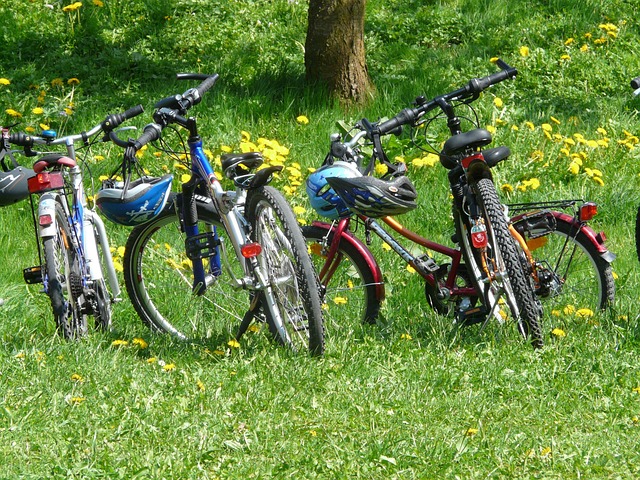In the rhythm of our contemporary lives, the hum of screens has become almost indistinguishable from the steady drum of the city. Smartphones, laptops, and smart home devices have woven themselves into the fabric of daily routines, making it increasingly difficult to carve out moments of genuine stillness. Yet, the need for a pause—a break from the relentless influx of notifications, emails, and social media—is growing louder among people who yearn to reconnect with the simplicity of being alive in the present. An Outing (excursion) that prioritizes digital detox offers a practical, immersive way to reset the mind, body, and spirit, creating space for authentic human connection and natural wonder.
The Overstimulation of Technology
Research in cognitive science and psychology consistently shows that constant exposure to digital stimuli can lead to a state of chronic alertness. This heightened vigilance, while useful in short bursts, becomes draining when maintained over long periods. The brain’s reward system, designed to respond to novelty, is overstimulated by rapid content turnover—think endless scrolling, instant feedback loops, and algorithmic curation that feeds our preferences. Over time, this can erode attention span, diminish deep thinking, and increase feelings of anxiety.
- Attention fatigue—the exhaustion that sets in when the brain has to constantly switch between tasks.
- Social comparison—the tendency to measure oneself against curated snapshots of others’ lives.
- Sleep disruption—blue light and the mental arousal from devices can interfere with the body’s natural sleep cycle.
Recognizing these effects is the first step toward seeking relief. A well‑planned Outing (excursion) dedicated to digital detox provides a structured escape from the digital clutter, allowing individuals to reclaim mental clarity and emotional balance.
The Therapeutic Power of a Digital‑Free Escape
When people remove themselves from the glow of screens, they often notice an immediate shift in sensory perception. Sounds that were previously drowned out—birdsong, distant traffic, the murmur of a forest—come to the forefront. Smells—earth, pine, ocean breeze—become more pronounced. Physical sensations like the warmth of sunlight or the coolness of a breeze can feel more vivid, providing a direct, grounding connection to the environment.
“In the quiet moments, we hear ourselves more clearly,” says Dr. Maya Linton, a clinical psychologist who has studied mindfulness interventions. “The absence of digital chatter invites the mind to settle, creating a space for insight and self‑compassion.”
The benefits of stepping away from screens extend beyond the mind. Regular exposure to natural settings has been linked to lower blood pressure, improved mood, and a strengthened immune response. A digital‑free Outing (excursion) amplifies these effects by combining physical movement with intentional reflection, offering a holistic reset that addresses both psychological and physiological well‑being.
Choosing the Right Destination
Not every environment automatically guarantees a successful digital detox. Selecting a location that naturally limits technology usage while offering sensory richness is crucial. Some practical options include:
- National or state parks—vast, unspoiled landscapes with limited cellular reception.
- Coastal retreats—beaches or seaside cliffs where the horizon invites contemplation.
- Mountain cabins—isolated lodgings surrounded by pine and the echo of wildlife.
- Rural farms or agritourism sites—places that encourage interaction with living creatures and hands‑on activities.
When planning, consider factors such as accessibility, the presence of power sources (if necessary), and the likelihood of encountering others who share a similar intention to unplug. A destination that encourages community yet respects privacy often provides the most balanced experience.
Preparing for the Digital Detour
Success in a digital detox Outing (excursion) hinges on thoughtful preparation. Here are actionable steps that help safeguard the experience:
- Set clear intentions. Write a brief statement of what you hope to achieve—whether it’s reducing stress, cultivating mindfulness, or simply enjoying uninterrupted time.
- Inform close contacts. Let trusted friends or family know of your plans, ensuring they understand that you may be unreachable for a set period.
- Remove distractions. Pack only essential items; leave gadgets at home or in a designated safe space that won’t tempt you during the trip.
- Plan activities. Prepare a mix of passive enjoyment (reading a physical book, sketching) and active engagement (hiking, stargazing) to keep the day dynamic.
- Practice mindfulness. Incorporate brief guided meditations or breathing exercises to anchor yourself when feelings of restlessness arise.
By treating the Outing (excursion) as a sacred appointment rather than a spontaneous getaway, participants reinforce their commitment to disconnecting and fully embracing the therapeutic potential of nature.
Incorporating Mindful Practices into the Excursion
A digital‑free Outing (excursion) can be enriched with intentional practices that deepen the experience. Below are some techniques that align well with the relaxation category, facilitating a deeper connection with the environment and oneself:
- Guided walking meditation. Slow, deliberate steps while paying attention to the sensation of feet touching the ground, the rhythm of breathing, and the sounds around you.
- Nature journaling. Keep a physical notebook to record observations, sketches, or thoughts that arise during the trip.
- Breathing with the breeze. Sit by a tree or along a shore and synchronize inhalations with the wind’s direction, exhalations with the sound of waves.
- Sunset or sunrise contemplation. Dedicate a moment to witness the transition of light, allowing the sky’s colors to prompt reflection.
- Community sharing. If traveling with others, end the day with a brief circle where each person shares a key insight or feeling.
These practices cultivate presence, a state where one experiences the moment without judgment or distraction. In the absence of digital noise, such mindfulness becomes more natural, encouraging a lasting shift toward healthier habits.
Reintegrating After the Outing (excursion)
Returning from a digital detox is often as significant as the departure. Without careful transition, the mental reset achieved during the Outing (excursion) can quickly fade. Here are strategies for sustaining the benefits:
- Gradual reintroduction. Begin by limiting device use to specific tasks (e.g., checking email once a day) rather than an immediate full return.
- Set boundaries. Create “tech‑free zones” at home—kitchens, bedrooms, or dining rooms where screens are prohibited.
- Establish daily mindfulness. Dedicate a few minutes each day to breathing or journaling, maintaining a connection to the present moment.
- Plan regular mini‑detoxes. Schedule short weekend walks or evenings without devices to reinforce the habit.
- Reflect on gains. Keep a log of how you feel before and after the Outing (excursion); this reflection can serve as motivation to maintain healthy tech usage.
By integrating these practices into daily life, the benefits of a digital‑free Outing (excursion) can extend far beyond the duration of the trip, promoting long‑term well‑being.
Why Digital Detox Outings Matter in Modern Society
The digital age has reshaped human interaction in unprecedented ways, bringing both convenience and complexity. As we navigate an era where work and social life often spill into the same screen, the line between “connected” and “overconnected” becomes blurred. A deliberate Outing (excursion) that prioritizes disconnection serves not only as a personal sanctuary but also as a societal reminder of the value of human presence without mediated filters.
In communities, these excursions can spark conversations about mental health, sustainable technology use, and the importance of preserving spaces where people can gather organically. When individuals share stories of how stepping outside screens helped them reframe priorities—be it reconnecting with a loved one, rediscovering a hobby, or simply appreciating the silence—such narratives create a ripple effect, encouraging others to consider similar breaks.
Ultimately, the practice of stepping away from technology and embracing the tangible world reinforces a core human truth: that meaning, connection, and peace are often found not in endless data streams, but in the shared experience of being together amid the world’s natural rhythms.
Final Thoughts and Call to Action
When the glow of screens fades, a fresh, unfiltered view of life emerges. The Outing (excursion) for Digital Detox Humans Over Tech is more than an escape; it’s an intentional investment in the health of our minds, bodies, and social fabric. By planning thoughtfully, practicing presence, and honoring the experience’s restorative power, anyone can reclaim a sense of balance that technology alone can never provide.
We encourage readers to schedule their own Outing (excursion) within the next month. Choose a place that speaks to you, set your intention, and commit to a period of unplugged exploration. You may find that the simplicity of nature—and the quiet company of fellow humans—offers a richer, more grounded perspective than any device ever could.




